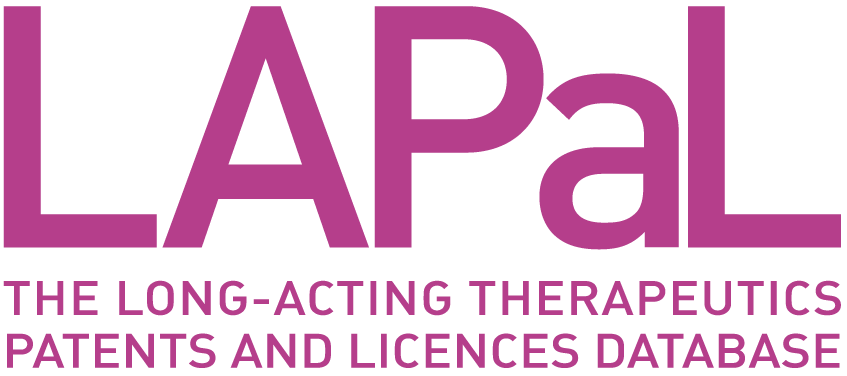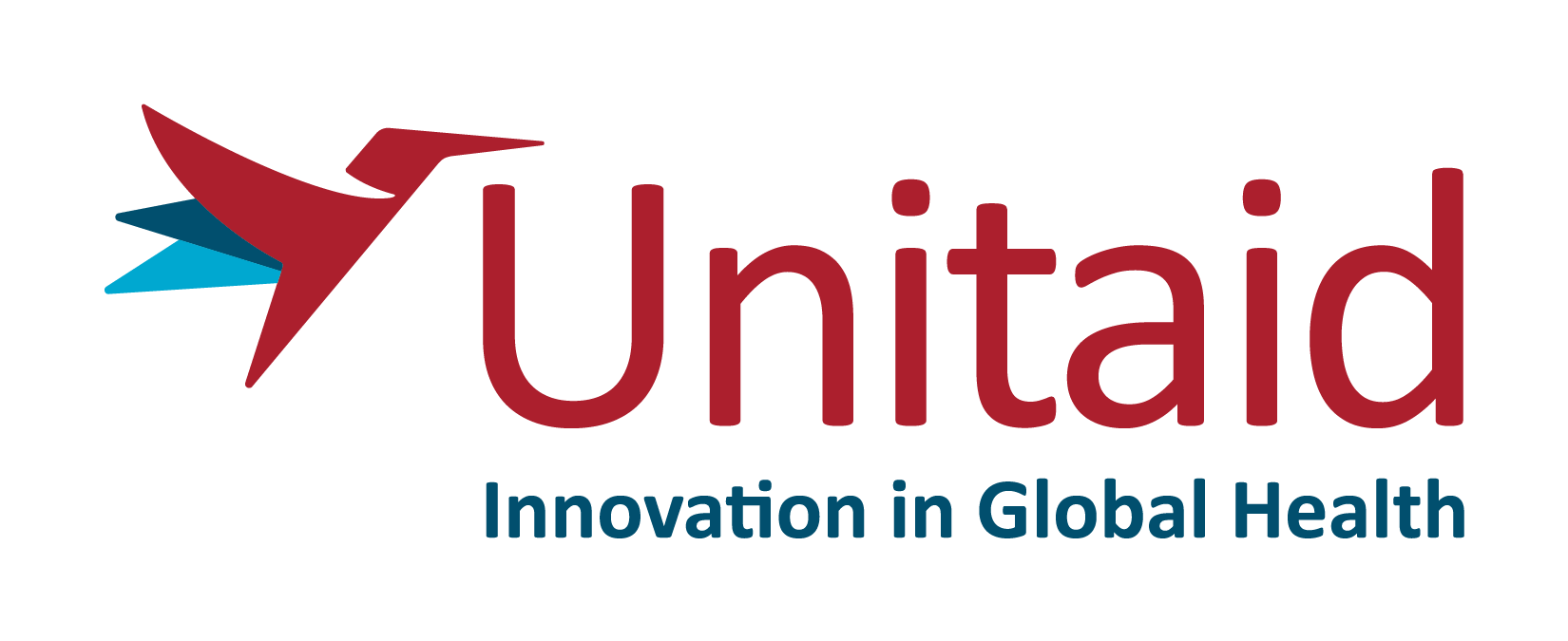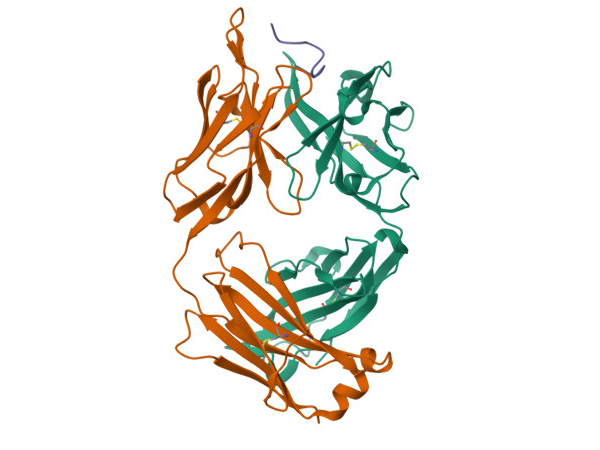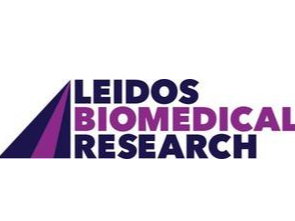
|
Developed by 

|
Supported by 

|

CIS43LS
Developer(s)

|
Leidos Biomedical Research https://www.leidos.com/United States Leidos Biomedical Research, Inc. is a research company that operates the Frederick National Laboratory for Cancer Research on behalf of the National Cancer Institute. Based in Frederick, Maryland, the laboratory develops technological solutions for HIV/AIDs, emerging infectious diseases and oncology, in addition to providing scientific support to several national institutes including the NIAID. |
Drug structure

Crystal Structure of CIS43 with PfCSP Peptide 20
https://doi.org/10.2210/pdb6B5L/pdb
Drug information
Associated long-acting platforms
Monoclonal Antibody
Administration route
Subcutaneous, Intravenous
Therapeutic area(s)
Use case(s)
Use of drug
Ease of administration
User acceptance
Not provided
Dosage
Available dose and strength
Not provided
Frequency of administration
Not provided
Maximum dose
Not provided
Recommended dosing regimen
Not provided
Additional comments
Not provided
Dosage link(s)
Not provided
Drug information
Drug's link(s)
Not provided
Generic name
Brand name
Compound type
Summary
Approval status
Regulatory authorities
Delivery device(s)
No delivery device
Scale-up and manufacturing prospects
Scale-up prospects
Manufacturing requirements and production scale-up for therapeutic monoclonal antibodies (mAbs) is primarily focused on pharmacokinetic suitability, formulation stability and overall maintenance of product quality. In addition, industrial bioprocessing steps can introduce further challenges regarding mAb formulation viscosity and aggregation propensity.
Tentative equipment list for manufacturing
Industrial bioreactor vessel with a production volume capacity of between 5-25kL. Continuous disc stack centrifuges for bioreactor harvesting with subsequent membrane and depth filtration for supernatant clarification. Recombinant protein-A chromatography or other suitable affinity capture apparatus followed by two chromatographic polishing steps such as cation- and anion-exchange. Ultrafiltration membrane system to concentrate and formulate the final product.
Manufacturing
MAbs are highly dependent on their structural, chemical and conformational stability for biological activity. Chemical degradation of mAbs during manufacture can lead to the generation of product variants and complex impurity profiles resulting from a wide range of processes, including: N-linked glycosylation, isomerisation, fragmentation, deamidation, oxidation and C-terminal lysine clipping. Additionally prior to packaging, the final product requires close monitoring for the presence of residual contaminants such as endotoxins and pro-inflammatory peptidoglycans.
Specific analytical instrument required for characterization of formulation
Formulation characterisation steps for therapeutic mAb products include (but are not limited to): (1) Identification of post-translational modifications using ion-exchange chromatography and capillary isoelectric focusing, (2) Measurement of concentration dependent aggregation rates via thermal differential scanning calorimetry, sub-visible particle quantitation and size-exclusion chromatography, and (3) Antibody clipping and fragmentation detection by capillary electrophoresis.
Clinical trials
VRC 612
Identifier
NCT04206332
Link
https://www.clinicaltrials.gov/study/NCT04206332
Phase
Phase I
Status
Completed
Sponsor
National Institute of Allergy and Infectious Diseases (NIAID)
More details
Not provided
Purpose
Evaluate the protective efficacy, tolerability, safety and dose of the anti-malarial human monoclonal antibody CIS43LS (VRC-MALMAB0100-00-AB).
Interventions
Intervention 1
Intervention 2
Countries
Sites / Institutions
Not provided
Trials dates
Anticipated Start Date
Not provided
Actual Start Date
2020-01-07
Anticipated Date of Last Follow-up
Not provided
Estimated Primary Completion Date
Not provided
Estimated Completion Date
Not provided
Actual Primary Completion Date
2022-02-28
Actual Completion Date
2022-02-28
Studied populations
Age Cohort
- Adults
Genders
- All
Accepts pregnant individuals
No
Accepts lactating individuals
No
Accepts healthy individuals
Yes
Comments about the studied populations
Study participants aged between 18 to 50 years and in good general health without clinically significant medical history. Exclusion criteria includes previous receipt of a malaria vaccine.
Health status
Study type
Interventional (clinical trial)
Enrollment
71
Allocation
Non-randomized
Intervention model
Sequential assignment
Intervention model description
Not provided
Masking
Open label
Masking description
None (Open Label)
Frequency of administration
Studied LA-formulation(s)
Studied route(s) of administration
Use case
PrEP
Key results
| Type of key results | Title | Website link |
|---|---|---|
| Article | A Monoclonal Antibody for Malaria Prevention | https://doi.org/10.1056/nejmoa2034031 |
| Article | Low-dose intravenous and subcutaneous CIS43LS monoclonal antibody for protection against malaria (VRC 612 Part C): a phase 1, adaptive trial | https://doi.org/10.1016/s1473-3099(22)00793-9 |
2020/32/CE/FMOS/FAPH
Identifier
NCT04329104
Link
https://www.clinicaltrials.gov/study/NCT04329104
Phase
Phase II
Status
Completed
Sponsor
National Institute of Allergy and Infectious Diseases (NIAID)
More details
Not provided
Purpose
Evaluate the safety, tolerability, and efficacy of VRC MALMAB0100-00-AB (CIS43LS), a human monoclonal antibody, against naturally occurring Plasmodium falciparum (Pf) infection.
Interventions
Intervention 1
Intervention 2
Countries
Sites / Institutions
Not provided
Trials dates
Anticipated Start Date
Not provided
Actual Start Date
2021-02-15
Anticipated Date of Last Follow-up
Not provided
Estimated Primary Completion Date
Not provided
Estimated Completion Date
Not provided
Actual Primary Completion Date
2022-01-26
Actual Completion Date
2023-07-05
Studied populations
Age Cohort
- Adults
Genders
- All
Accepts pregnant individuals
No
Accepts lactating individuals
No
Accepts healthy individuals
Yes
Comments about the studied populations
Participants aged ≥18 and ≤55 years and in good general health and without clinically significant medical history.
Health status
Study type
Interventional (clinical trial)
Enrollment
348
Allocation
Randomized
Intervention model
Sequential assignment
Intervention model description
Not provided
Masking
Double-blind masking
Masking description
Double (Participant, Investigator)
Frequency of administration
Studied LA-formulation(s)
Studied route(s) of administration
Use case
PrEP
Key results
| Type of key results | Title | Website link |
|---|---|---|
| Article | Safety and Efficacy of a Monoclonal Antibody against Malaria in Mali | https://doi.org/10.1056/nejmoa2206966 |
Excipients
Proprietary excipients used
Not provided
Novel excipients or existing excipients at a concentration above Inactive Ingredients Database (IID) for the specified route of administration
Not provided
Residual solvents used
Not provided
Patent info
There are either no relevant patents or these were not yet submitted to LAPaL
Supporting material
Publications
Kisalu NK, Pereira LD, Ernste K, Flores-Garcia Y, Idris AH, Asokan M, Dillon M, MacDonald S, Shi W, Chen X, Pegu A, Schön A, Zavala F, Balazs AB, Francica JR, Seder RA. Enhancing durability of CIS43 monoclonal antibody by Fc mutation or AAV delivery for malaria prevention. JCI Insight. 2021 Feb 8;6(3):e143958. DOI: 10.1172/jci.insight.143958. PMID: 33332286; PMCID: PMC7934869.
CIS43 is a potent neutralizing human mAb that targets a highly conserved “junctional” epitope in the Plasmodium falciparum (Pf) circumsporozoite protein (PfCSP). Enhancing the durability of CIS43 in vivo will be important for clinical translation. Here, 2 approaches were used to improve the durability of CIS43 in vivo while maintaining potent neutralization. First, the Fc domain was modified with the LS mutations (CIS43LS) to increase CIS43 binding affinity for the neonatal Fc receptor (FcRn). CIS43LS and CIS43 showed comparable in vivo protective efficacy. CIS43LS had 9- to 13-fold increased binding affinity for human (6.2 nM versus 54.2 nM) and rhesus (25.1 nM versus 325.8 nM) FcRn at endosomal pH 6.0 compared with CIS43. Importantly, the half-life of CIS43LS in rhesus macaques increased from 22 days to 39 days compared with CIS43. The second approach for sustaining antibody levels of CIS43 in vivo is through adeno-associated virus (AAV) expression. Mice administered once with AAV-expressing CIS43 had sustained antibody levels of approximately 300 μg/mL and mediated protection against sequential malaria challenges up to 36 weeks. Based on these data, CIS43LS has advanced to phase I clinical trials, and AAV delivery provides a potential next-generation approach for malaria prevention.
Additional documents
No documents were uploaded
Useful links
There are no additional links
Access principles
|
|
Collaborate for developmentConsider on a case by case basis, collaborating on developing long acting products with potential significant public health impact, especially for low- and middle-income countries (LMICs), utilising the referred to long-acting technology Not provided |
|
|
Share technical information for match-making assessmentProvide necessary technical information to a potential partner, under confidentiality agreement, to enable preliminary assessment of whether specific medicines of public health importance in LMICs might be compatible with the referred to long-acting technology to achieve a public health benefit Not provided |
|
|
Work with MPP to expand access in LMICsIn the event that a product using the referred to long-acting technology is successfully developed, the technology IP holder(s) will work with the Medicines Patent Pool towards putting in place the most appropriate strategy for timely and affordable access in low and middle-income countries, including through licensing Not provided |
Comment & Information
Not provided